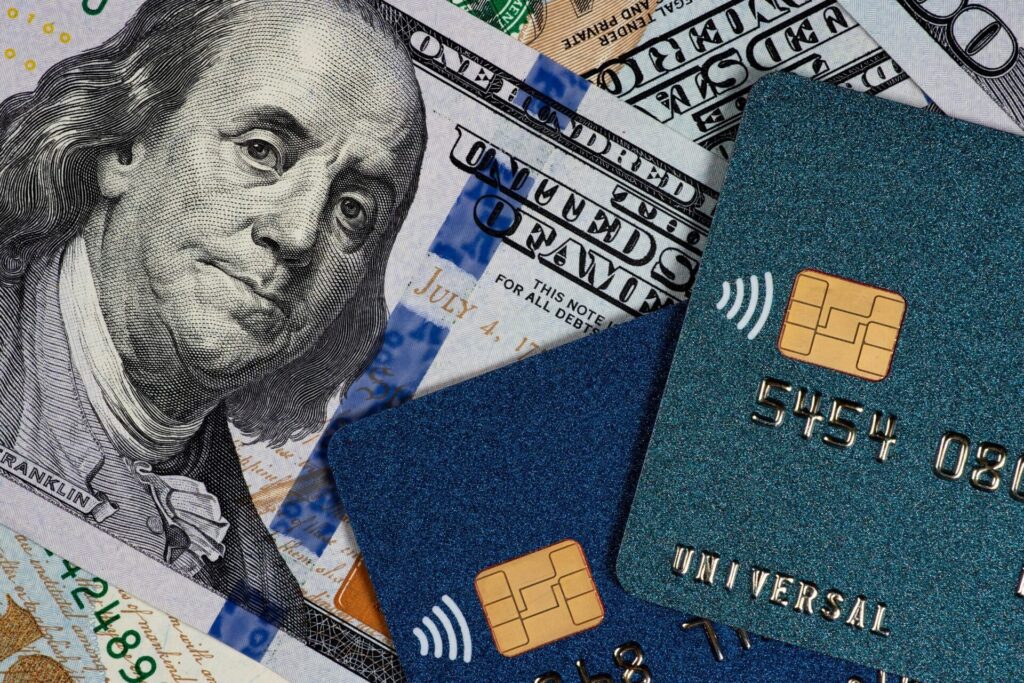Credit cards are pretty necessary in everyday life, but they can make it easy to get into debt trouble. What’s the average household credit card debt, and how can you manage yours more effectively?
Recent data tells us that the average household credit card debt in the United States is about $8,600. (That’s according to the Federal Reserve’s Survey of Consumer Finances.) This is the median, so it’s the middle point between households with higher and lower credit card debt.
Several things contribute to credit card debt among households, including income levels, geographic location, and individual spending habits. Higher-income households may have more disposable income, allowing for higher credit card spending. Additionally, residents of certain regions with higher living costs may experience elevated credit card debt compared to those in lower-cost areas.
The impact of carrying significant credit card debt goes beyond the immediate financial stuff. High levels of credit card debt can lead to increased stress, hurt your credit scores, and limit your ability to save toward your future goals. The interest accrued on outstanding balances can become a substantial financial burden, making it challenging to break free from the debt cycle.
Here are some ways to manage credit card debt effectively and improve your overall financial health.
1. Create a budget
Establishing a budget is a fundamental step in taking control of your finances. Outline your monthly income, categorize expenses, and allocate specific amounts to different spending categories. A well-crafted budget can help you identify areas where you can cut back and allocate more funds to debt repayment. Brigit’s Finance Helper is a great tool for tracking your expenses by category and budgeting.
2. Prioritize high-interest debt
If you have multiple credit cards with varying interest rates, prioritize paying off the cards with the highest interest rates first. This strategy, known as the debt avalanche method, minimizes the overall interest paid and accelerates your journey to debt freedom.
3. Consolidate and refinance
Explore options for consolidating your credit card debt. Consolidation involves combining multiple debts into a single, more manageable payment, often with a lower interest rate. Additionally, consider refinancing your credit card debt through a personal loan with a lower interest rate, which can help reduce overall interest costs.
4. Negotiate with creditors
Don’t hesitate to reach out to your creditors to discuss your situation. Some creditors may be willing to negotiate lower interest rates or offer temporary relief, such as a hardship program. Communication is key, and many creditors are open to working with you to find a mutually beneficial solution.
5. Cut unnecessary expenses
Evaluate your discretionary spending and identify areas where you can cut back. Redirecting funds from non-essential expenses to debt repayment can significantly impact your ability to pay down credit card balances.
6. Build an emergency fund
Establishing an emergency fund is crucial to prevent future reliance on credit cards in times of unexpected expenses. Having a financial cushion can help you avoid accumulating additional credit card debt when faced with unforeseen circumstances.
7. Seek professional guidance
If your credit card debt feels overwhelming, consider seeking advice from a financial counselor. Credit counseling agencies can provide personalized guidance, debt management plans, and resources to help you navigate your specific financial challenges.
Understanding the average household credit card debt is an important step in gauging your own financial health and making informed decisions. By implementing responsible credit management strategies, you can take control of your finances, reduce debt, and work towards a more secure financial future.










